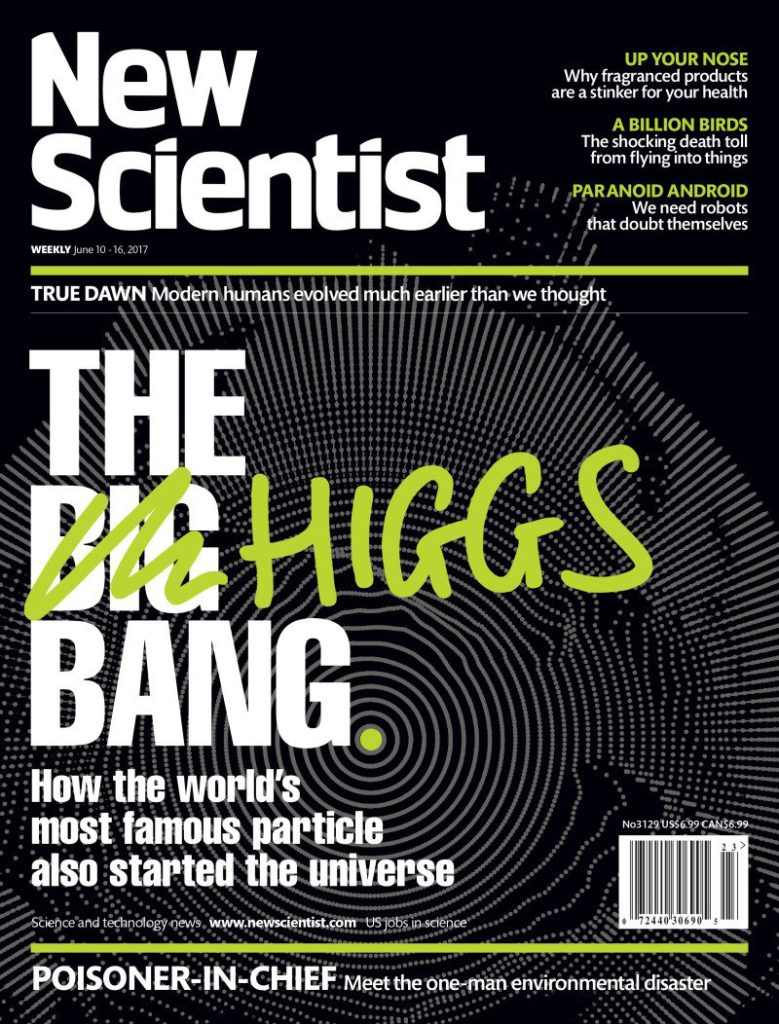 Did the mass-giving particle make the universe too, asks Jon Cartwright
Did the mass-giving particle make the universe too, asks Jon Cartwright
THEY say it started with a bang, but in truth it misfired. The universe began as
a hot speck of energy and, for an instant, remained just that. Then it blew up: from this initial seed, trillions upon trillions of times smaller than an atom, everything suddenly ballooned into the gargantuan proportions of a Tic Tac. In a mere fraction of a second, the universe expanded by nearly as many orders of magnitude as it would in the following 13.8 billion years.
Believe it or not, this burst of cosmological inflation, followed by a slower, tamer expansion, is the most sensible way to explain how the universe looks today. But there’s something missing: what did the inflating?
The answer could be everywhere, and right under our noses. When a long-sought particle finally appeared a few years back, it seemed to close a chapter in physics without giving any clue about what happens next. Read between the lines, though, as some theorists recently have, and you see that the famous Higgs boson – the particle that gives mass, or inertia, to all other particles – might have an explosive secret. “If the Higgs gives inertia to particles,” says Juan García-Bellido at the Autonomous University of Madrid, “can it give inertia to the entire universe?” […]
The rest of this article is available here.